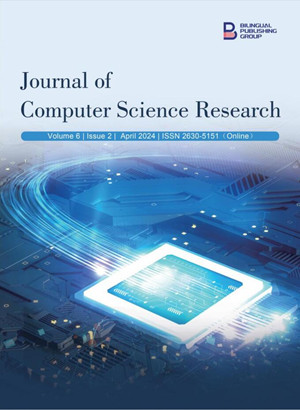
Research on the Spatiotemporal Distribution Relationship between Regional Rainfall and Taxi Supply in Singapore
DOI:
https://doi.org/10.30564/jcsr.v6i2.6619Abstract
This quantitative correlational study intends to investigate the spatiotemporal relationship between rainfall and taxi supply in Singapore. Over the period of 4 months, coordinates of all available taxis in Singapore, as well as rain value data from 66 weather stations located around the island, were collected every minute from public Application Programming Interfaces (API). Singapore was divided into a grid of 3km by 2km rectangles, with each region minutely assigned a taxi supply count and a rain value weighted based on distance to the weather station. To obtain groups where taxis behaved similarly, the data on weekends and weekdays were separated, then divided spatially and temporally. A non-linear correlation coefficient was calculated for each category. It was hypothesized that rainfall notably reduces taxi supply in most regions, an effect most pronounced in the evening rush hours (18:00 – 21:00) on all days of the week. The results do not fully validate this hypothesis, displaying that though taxi supply levels were generally decreased in situations with rainfall, they could likewise reach low levels in scenarios without.
Keywords:
Rainfall; Taxi supply; Spatiotemporal distribution; Public transiReferences
[1] Hörcher, D., Tirachini, A., 2021. A review of public transport economics. Economics of Transportation. 25, 100196. DOI: https://doi.org/10.1016/j.ecotra.2021.100196
[2] İmre, Ş., Çelebi, D., 2017. Measuring comfort in public transport: a case study for i̇stanbul. Transportation Research Procedia. 25, 2441–2449. DOI: https://doi.org/10.1016/j.trpro.2017.05.261
[3] Aarhaug, J., 2016. Taxis as a Part of Public Transport. Sustainable Urban Transport Project.
[4] Chen, D., Zhang, Y., Gao, L., et al., 2017. The impact of rainfall on the temporal and spatial distribution of taxi passengers. PLOS ONE. 12(9). DOI: https://doi.org/10.1371/journal.pone.0183574
[5] Kamga, C., Yazici, M.A., Singhal, A., 2013. Hailing in the rain: temporal and weather-related variations in taxi ridership and taxi demand-supply equilibrium. In Proceedings of the 92nd Annual Meeting of Transportation Research Board. Transportation Research Board. Washington, DC, USA.
[6] Liu, Q., Ding, C., Chen, P., 2020. A panel analysis of the effect of the urban environment on the spatiotemporal pattern of taxi demand. Travel Behaviour and Society. 18, 29–36. DOI: https://doi.org/10.1016/j.tbs.2019.09.003
[7] Balan, R.K., Nguyen, K.X., Jiang, L., 2011. Real-time trip information service for a large taxi fleet. Proceedings of the 9th International Conference on Mobile Systems, Applications, and Services. DOI: https://doi.org/10.1145/1999995.2000006
[8] Land Transport Authority, 2023. Point-to-Point transport sector Statistics 2023. Land Transport Authority.
[9] Wang, Y., Zheng, B., Lim, E.-P., 2018. Understanding the effects of taxi ride-sharing — a case study of Singapore. Computers, Environment and Urban Systems. 69, 124–132. DOI: https://doi.org/10.1016/j.compenvurbsys.2018.01.006
[10] Beck, F., Bárdossy, A., Seidel, J., et al., 2015. Statistical analysis of sub-daily precipitation extremes in Singapore. Journal of Hydrology: Regional Studies. 3, 337–358. DOI: https://doi.org/10.1016/j.ejrh.2015.02.001
[11] Li, X., Zhang, K., Babovic, V., 2019. Projections of future climate change in Singapore based on a multi-site multivariate downscaling approach. Water. 11(11), 2300. DOI: https://doi.org/10.3390/w11112300
[12] Sun, J., Dong, H., Qin, G., et al., 2020. Quantifying the impact of rainfall on taxi hailing and Operation. Journal of Advanced Transportation. 2020, 1–14. DOI: https://doi.org/10.1155/2020/7081628
[13] Wemegah, T. D., Zhu, S., Atombo, C., 2018. Modeling the effect of days and road type on peak period travels using structural equation modeling and big data from radio frequency identification for private cars and taxis. European Transport Research Review. 10(2). DOI: https://doi.org/10.1186/s12544-018-0313-9
[14] Shepard, D., 1968. A two-dimensional interpolation function for irregularly-spaced data. Proceedings of the 1968 ACM National Conference, New York, 27–29 August 1968, 517–524.
[15] Ryzin, J.V., 1973. A histogram method of density estimation. Communications in Statistics-theory and Methods. 2, 493–506.
[16] Heinen, A., Valdesogo, A., 2022. The Kendall and spearman rank correlations of the bivariate Skew Normal Distribution. Scandinavian Journal of Statistics. 49(4), 1669–1698. DOI: https://doi.org/10.1111/sjos.12587
[17] Arana, P., Cabezudo, S., Peñalba, M., 2014. Influence of weather conditions on transit ridership: A statistical study using data from Smartcards. Transportation Research Part A: Policy and Practice. 59, 1–12. DOI: https://doi.org/10.1016/j.tra.2013.10.019
[18] Zhou, M., Wang, D., Li, Q., et al., 2017. Impacts of weather on public transport ridership: results from mining data from different sources. Transportation Research Part C: Emerging Technologies. 75, 17–29. DOI: https://doi.org/10.1016/j.trc.2016.12.001
[19] Brodeur, A., Nield, K., 2018. An empirical analysis of taxi, lyft and uber rides: Evidence from weather shocks in NYC. Journal of Economic Behavior and amp; Organization. 152, 1–16. DOI: https://doi.org/10.1016/j.jebo.2018.06.004
[20] Guo, P., Sun, Y., Chen, Q., et al., 2022. The impact of rainfall on urban human mobility from taxi GPS Data. Sustainability, 14(15), 9355. DOI: https://doi.org/10.3390/su14159355
[21] Chou, Y. K., 2002. Testing alternative models of labour supply: Evidence from taxi drivers in Singapore. The Singapore Economic Review. 47(01), 17–47. DOI: https://doi.org/10.1142/s0217590802000389
[22] Lepage, S., Morency, C., 2020. Impact of weather, activities, and service disruptions on Transportation Demand. Transportation Research Record: Journal of the Transportation Research Board. 2675(1), 294–304. DOI: https://doi.org/10.1177/0361198120966326
[23] Zhou, Y., Mao, S., Zhao, H., et al., 2022. How Rainfalls Influence Urban Traffic Congestion and Its Associated Economic Losses at Present and in Future: Taking Cities in the Beijing-Tianjin-Hebei Region, China for Example? DOI: https://doi.org/10.21203/rs.3.rs-1442299/v1
Downloads
How to Cite
Issue
Article Type
License
Copyright © 2024 Author(s)

This is an open access article under the Creative Commons Attribution-NonCommercial 4.0 International (CC BY-NC 4.0) License.




 Yuqi Wang
Yuqi Wang





